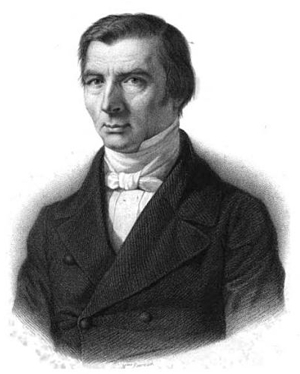
Introduction
The French political economist, politician, and journalist Frédéric Bastiat (1801-1850) placed “markets” and mutually beneficial “exchange” at the very heart of of his theory of economics which he elaborated in a two volume collection of essays Sophismes économiques (Economic Sophisms) (1846, 1848), a long essay on “La Loi” (The Law) (1850), and his unfinished treatise Harmonies économiques (Economic Harmonies) (1850, 1851)
His ideas are a sophisticated and theoretically rich “philosophy of markets” as he combined into a coherent whole the following aspects:
- moral theory (the natural right to own property, opposition to the initiation of coercion against others),
- economic theory (efficiency, prosperity, the primacy of the consumer), and
- sociology (the class structure of the state, the organisation and history of “la spoliation” (plunder).
Bastiat’s Theory of Markets
Bastiat’s theory of markets has the following key points:
He believed that all individuals have needs and desires (des besoins) which they attempt to satisfy by taking action (l’action, les efforts) , either alone or by interacting with others in “markets”.
In order to explain how an individual makes choices when acting alone, Bastiat developed a theory of “Crusoe economics” to illustrate the nature of “human action” (l’action humaine) which influenced the thinking of Murray Rothbard in the 1950s and 60s when he was writing his treatise Man, Economy, and State (1962).
When individuals interact with others to satisfy their needs they create “markets” (or “the market”) which are made up of a multiplicity of individual exchanges.
He defined an exchange as the voluntary and mutually beneficial exchange of “service for service” (service pour service).
Over time there emerges an “apparatus of exchange” (l’appareil de l’échange) which is a collection of practices, beliefs, customs, laws, and institutions which make markets / exchange possible on a large scale and which continues over long periods of time.
Like Destutt de Tracy Bastiat thought that society could be regarded as “one Great Bazaar” (un immense bazar), in which there existed a huge number of interlocking / parallel markets satisfying a large number of of very diverse and often complex needs of the consumers which were satisfied by an equally large and very diverse number of producers. His concept of the “Great Bazaar” is very similar to Friedrich Hayek’s notion of the “Great Society” which was the global scale “spontaneous order” within which there were a myriad of smaller spontaneous orders often local in scale.
Markets are normally / potentially “harmonious” for all the participants (domestic or international, consumers and producers) unless they are disrupted by coercion and other “disturbing factors” (des causes perturbatrices) which creates “disharmony” (la dissonance).
If markets are allowed to flourish unmolested they can produce peace, prosperity and justice for those who participate in them.
On the other hand, if they are “disturbed” by government intervention markets can become “distorted” (déplacé), as in the misallocation of capital, and labour, and cause economic hardship, conflict, and injustice (economic recessions, war, plunder)
Thus markets are both fragile and robust at the same time. They can be broken or distorted by “disturbing factors” like coercion, war, plunder, and the granting of privileges to a favored few; yet they can also be quite robust since they have a self-repairing feature or what Bastiat termed “restorative factors” (des causes réparatrices)), which were driven by the self-interest of consumers and producers, price signals in the market, and the sense of “responsibility” and “solidarity” help by most people.
In order to properly understand the complexity of markets, especially if they are “disturbed” by government intervention, Bastiat developed his famous theory of “the seen” and “the unseen”. By “the seen” Bastiat meant that which was obvious and immediately visible to observers; and by “the unseen” he meant the hidden, delayed, or unexpected consequences of that intervention into markets which are not so obvious and apparent but nevertheless inevitable and apparent to the insightful and patient observer.
The opposite of the “harmony” of markets is “disharmony” (la dissonance”) caused by “la spoliation” (plunder) of various kinds. Bastiat had plans to write a multi-volume work of social theory which would deal with “Social Harmonies”, “Economic Harmonies” (the only volume to appear), and the Disharmonies caused by Plunder, the history of which Bastiat planned to write another volume but died before he could finish it.
In summary, one could say that the ideal of liberals like Bastiat and his friend Richard Cobden is that there should be “free markets in everything”.
Further Reading
Works by and about Bastiat here.
- David M. Hart, “Bastiat on the Seen and the Unseen: An Intellectual History” here.
- David M. Hart, “Bastiat on Harmony and Disharmony” here.
- David M. Hart, ”The Paris School of Liberal Political Economy, 1803-1853” here.
The schematics I have created to illustrate the complex “word clusters” he used:
Blog Post: “Some Key Terms used by Bastiat in his Economic Theory” (22 Dec. 2019) here.
Website: “Vocabulary Clusters in the Thought of Frédéric Bastiat” here.
- Class:
- Disturbing Factors
- Harmony – Disharmony
- Human Action
- Plunder
- The Seen and the Unseen
